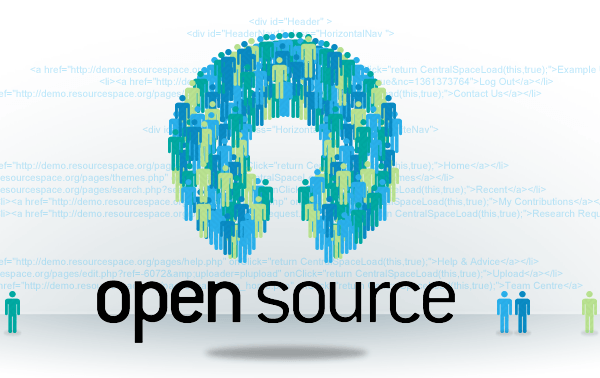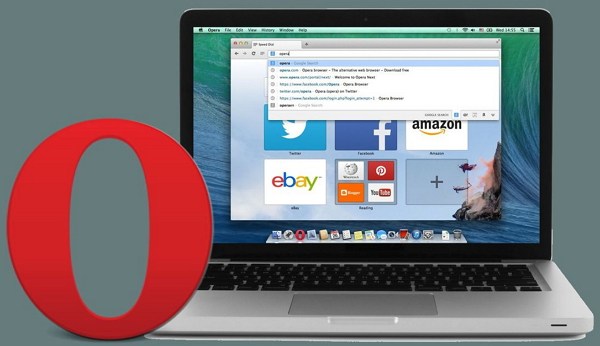A software for computers is usually paid. For example, if you use the Windows operating system, which also has Ms Ofice installed in it, the operating system and software are paid software. You need to pay the manufacturer first before you can use it legally. In addition to the paid system, there is also a system called "Open Source" which does not require users to pay, can be accessed for free and legally. The following will be explained about the notion of open source along with the kinds, advantages and disadvantages of open source.
Definition of Open Source
Open source is a development license whose management is not coordinated by an individual or a central institution, but is coordinated by users who work together on the use of source code that is freely available and can be accessed or modified by anyone. Basically, open source applies the take and give development pattern.

Everyone can use an open source program for free, then if the program feels there are some that lack or require additional features, that user can modify it and contribute to making the program better. The freedom to work is highly upheld by the open source pattern. Users are free to work without intervention to study, change, tamper with, add certain parts, improve, or state that a source code has an error.
In addition, users can also re-spread the open source program or software to be used by many people. Although it seems that each user is free to make modifications, of course, it must be accompanied by full responsibility and not carelessly in making modifications.
Open Source Examples

Linux, one of the most popular open source operating systems
Below are various examples of operating systems or software that use open source licenses as well as mentioning some paid software as a comparison.
Open Source Operating System: For example, UNIX, Linux, and various derivatives. Linux itself has several types of variants (distributions), such as Slackware, Debian, SuSE, and RedHat. Differentiate from paid operating systems such as Windows and MacOS.
Image and Photo Editor Software: For example GIMP, InkScape, Abhishek's GLIMPSE and Digikam. Differentiate also with paid software like Adobe Photoshop and Corel Draw.
Office Editor: For example LibreOffice and OpenOffice. This open source office application is different from paid office like Microsoft Office.
Smartphone Operating System: Android and Firefox OS use open source licenses, while Windows Phone and iOS are paid operating systems.
Kinds of Software Licenses Besides Open Source

Opera Browser, is one example of freeware software
In addition to open source software that can be accessed or modified for free, there are several other types of software that can also be accessed for free, but different from open source, both in terms of usage time, the presence of advertisements, or the appearance or absence of source code. The following are various types of software licenses other than open source licenses:
Freeware: free software to use, but users cannot see the source code, it is also required not to modify the software. A freeware usually has no limits on the amount and time of use.
Shareware: software that can be downloaded and used for trial only. A distinctive feature of shareware is the usage time limit, for example 7 days or 30 days. After that, the software can no longer be used or locked. If the user feels satisfied, then he can buy the software.
Adware: free software, it's just that there are lots of advertisements when run. This ad is like a source of income for the creator / developer of the software.
Advantages of Open Source
Software that uses an open source license has several advantages, including:
1. Users are free to develop systems: Open source allows users to learn the source code of a software (understand it little by little). After free users are free to see and understand the source code, users can also analyze whether there is something that needs to be improved / added from the source code, then modify it (if needed) so that the software becomes better than before. Modifications can also be intended so that a new system appears that is in accordance with the wishes of the user.
2. Is a Legal System: By using open source software, users will not violate the law because indeed these devices are not controlled by one particular party commercially. Different for example if a user uses pirated software which is actually not free, which means violating the law and can be subject to certain sanctions.
3. No Piracy: Because all users are free to use and modify open source software, no user can hijack it, because after all the software has been distributed for free, everyone can get it easily without the need to pay. Usually, piracy occurs because the price of software is quite expensive and not everyone can buy it.
Lack of Open Source
Unfortunately, besides all the advantages of open source, there are also some disadvantages, for example:
1. Without Funding and Marketing Support: Unlike other software supported by funding and marketing from the company, open source licenses do not have that support, so it takes quite a long time to introduce software that uses an open source license. For people who don't understand it, the software or the open source operating system is too foreign and finally few people know and use it.
2. Some Open Source Application Interfaces Are Less Familiar: The appearance of open source software may be different from close source software, so users must try to understand it by self-taught or familiarize themselves with that display. For example, maybe you are already accustomed to using the Windows operating system (close source operating system) which is the most popular operating system. And if you want to use an open source operating system such as Linux, of course you have to adapt to the look and navigation menu on the Linux operating system which is slightly different from Windows.
Thus the discussion about the notion of open source, examples, and the advantages and disadvantages. Hopefully the above explanation makes you more aware of what is open source and also other types of software licenses such as freeware, shareware or adware.
0 comentários:
Post a Comment